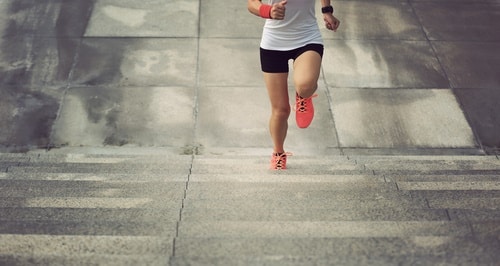Running on concrete requires shoes that offer exceptional support and durability to withstand the hard impact of this unforgiving surface. The best running shoes for concrete are designed to provide ample cushioning to absorb shock and reduce the stress on a runner’s joints. As concrete is much less forgiving than other running surfaces like tracks or trails, the importance of selecting a shoe that combines comfort with high-quality construction cannot be overstated.
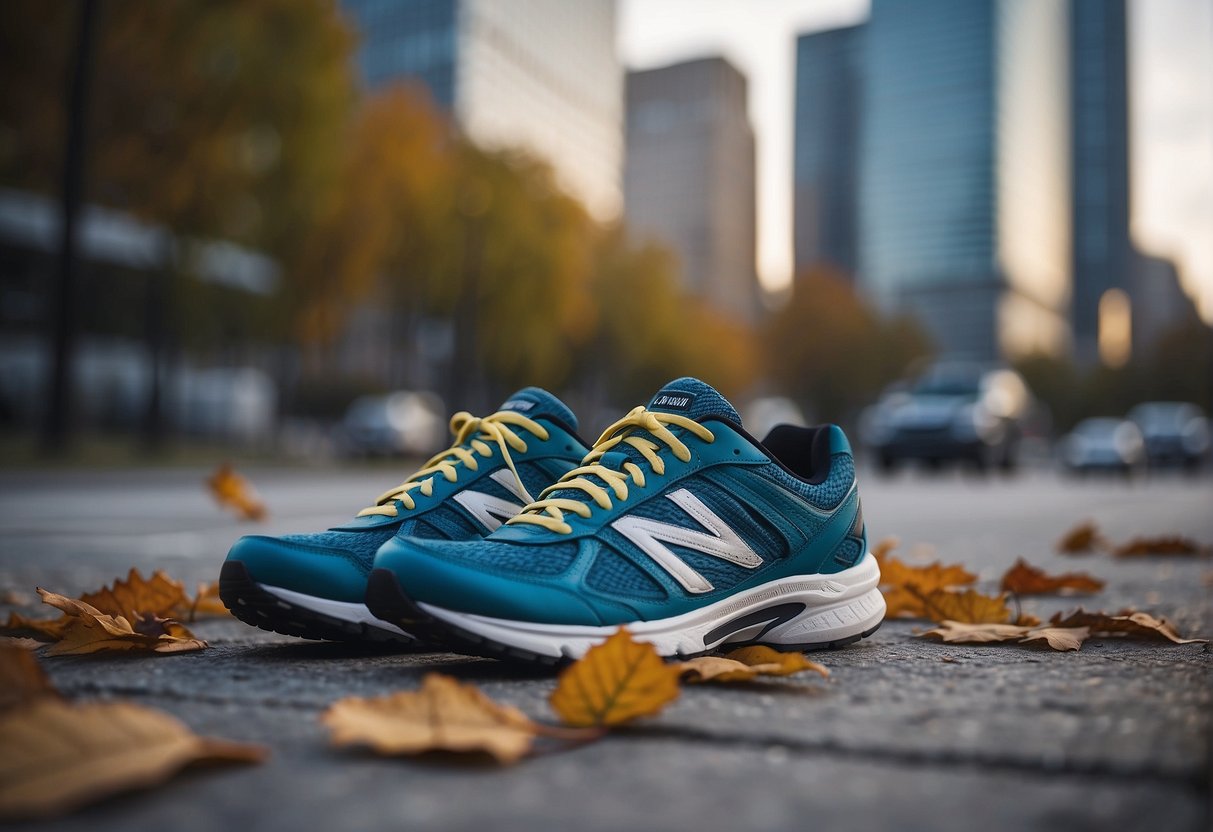
Manufacturers have engineered a variety of running shoes aimed at tackling the challenges posed by concrete surfaces. These running shoes typically feature robust outsoles with superior traction to ensure stability during runs. Furthermore, they are constructed from durable materials that can endure the repetitive pounding on hard surfaces without degradation in performance or comfort.
Finding the right balance between cushioning, support, and durability is critical when choosing the best running shoes for running on concrete. It not only enhances the running experience and helps in maintaining proper running form but also plays a crucial role in injury prevention. With the vast array of options available in the market, runners have the opportunity to select shoes that cater specifically to their individual needs and running styles.
Quick Navigation
Understanding Your Running Needs
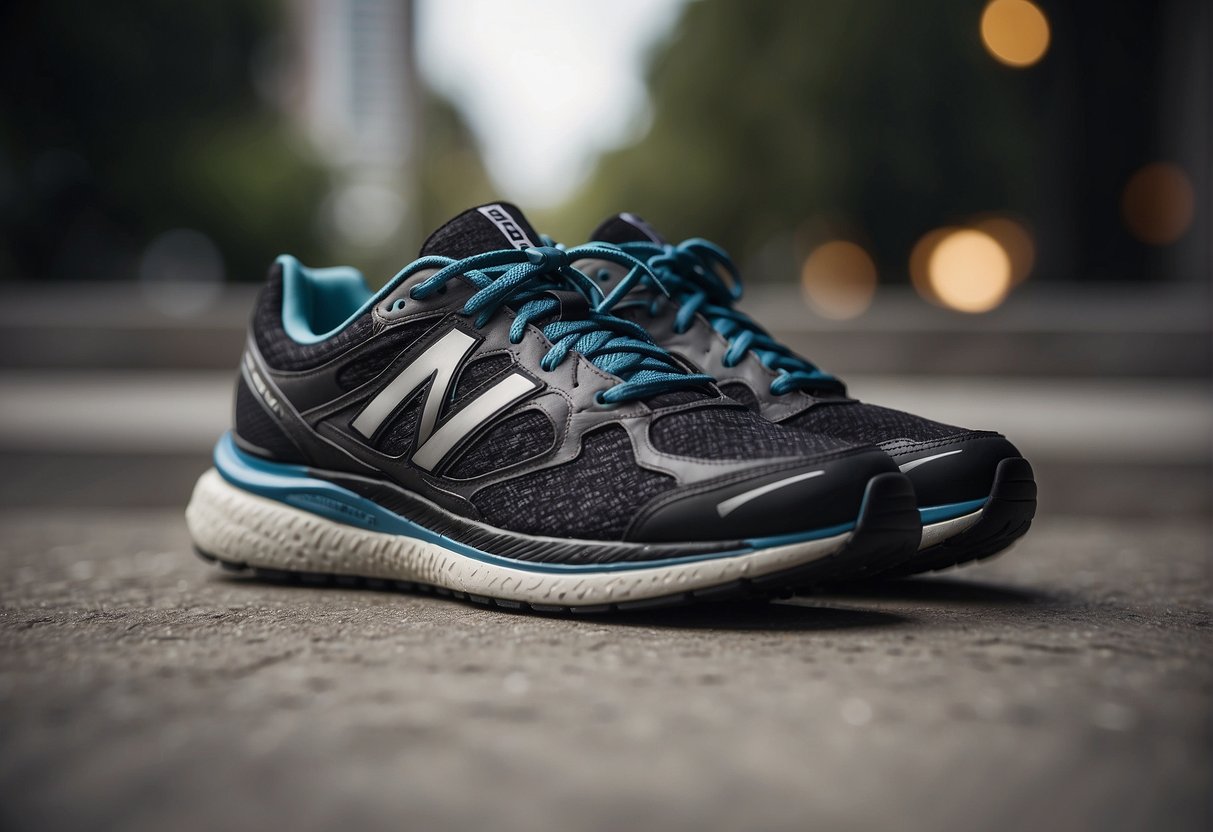
Selecting the best running shoes for concrete requires examining the surfaces you’ll encounter and the length of your runs. The right shoe enhances performance and comfort while reducing injury risk.
Assessing Your Running Surface
The surface you run on significantly influences the type of running shoe you should choose, impacting everything from comfort to injury prevention. Let’s delve deeper into this aspect:
-
Running on Hard Surfaces:
- Concrete and Asphalt: These are the most common surfaces for urban runners. The key here is to mitigate the impact on your joints and muscles. Shoes with a durable rubber outsole are not just about better grip; they also offer longevity and improved shock absorption. This is crucial for preventing injuries like shin splints or stress fractures.
- Key Features to Look For:
- Cushioning: Look for shoes with ample cushioning, especially in the midsole, to provide a soft landing and reduce the impact on your joints.
- Durability: A robust outsole material, like carbon rubber, can withstand the wear and tear of hard surfaces.
- Stability: Especially important for runners with pronation issues, stability features help maintain proper foot alignment.
-
Trail Running:
- Uneven Terrain and Natural Surfaces: Trail running presents a unique set of challenges, including uneven ground, rocks, roots, and mud. Shoes designed for trail running need to offer extra traction for a secure grip and enhanced stability to navigate these obstacles safely.
- Key Features to Look For:
- Traction: Aggressive tread patterns and sticky rubber compounds ensure a firm grip on slippery or uneven terrain.
- Protection: Reinforced toe caps and underfoot rock plates protect your feet from sharp objects and rough ground.
- Support: Trail shoes often have a more snug fit and offer additional ankle support to prevent rolling on uneven surfaces.
Distance Matters: Shoes for Short to Long Runs
The distance you plan to run is equally crucial in selecting the right shoe. Different distances require different features from your running shoes:
-
Short Runs and Tempo Runs:
- Speed and Responsiveness: For shorter distances, such as 5Ks or quick tempo runs, you’ll want a shoe that’s lightweight and responsive. These shoes often have a lower profile and less cushioning, allowing for a more direct feel of the ground and faster movement.
- Key Models: Shoes like the Nike Vaporfly are engineered for speed, featuring innovative technologies like carbon fiber plates that provide a propulsive feeling with each step.
-
Long Runs and Endurance Training:
- Comfort and Endurance: When you’re clocking in more miles, comfort becomes paramount. Shoes for longer distances, like half-marathons or full marathons, should have more cushioning to absorb the impact over time and provide sustained comfort.
- Key Models: The Hoka Clifton and Saucony Triumph are excellent examples of shoes built for the long haul. They offer plush cushioning, which helps reduce fatigue and keeps your feet comfortable over long distances.
- Additional Considerations: For long-distance running, aspects like breathability, fit, and weight also play a significant role. A breathable upper can keep your feet cool and dry, a well-fitting shoe can prevent blisters, and a lighter shoe can reduce the energy expenditure over miles.
Special Considerations in Running Shoes
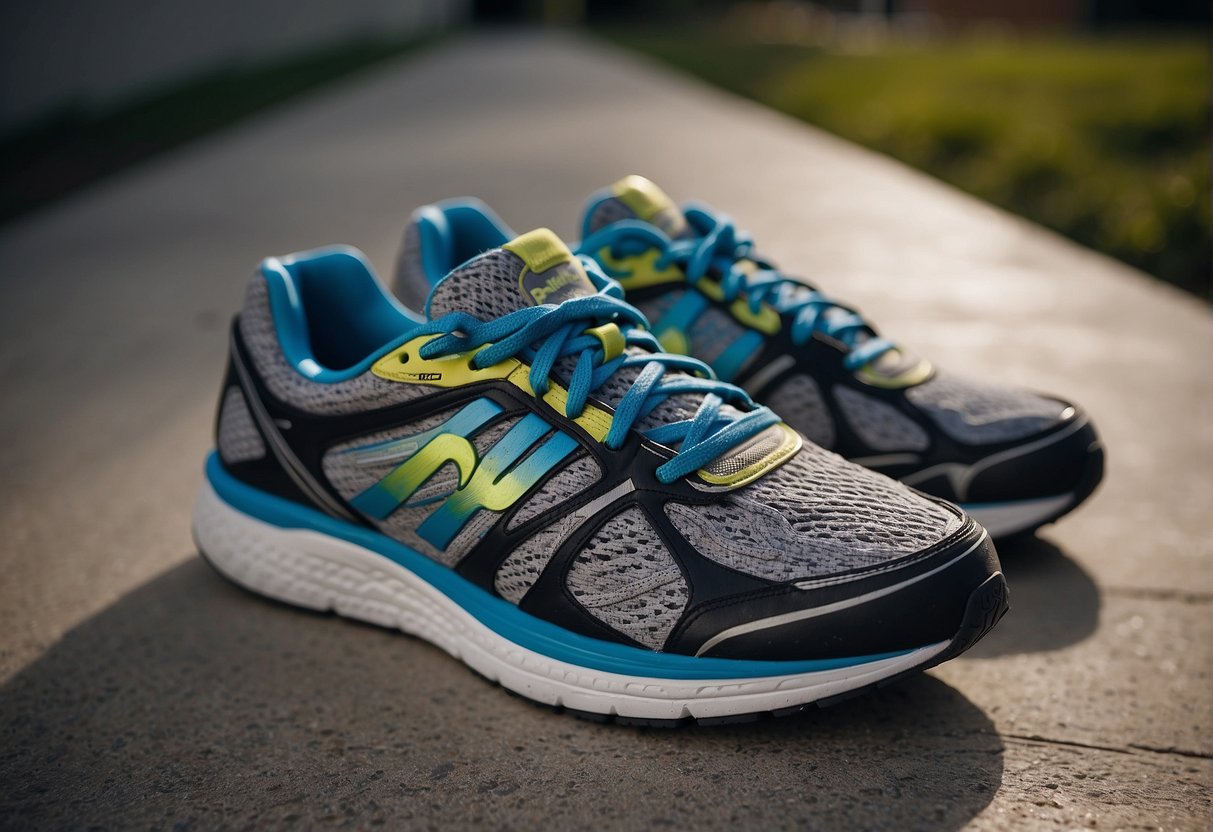
Choosing the right running shoes for concrete surfaces requires an understanding of both individual foot health and the specific features that contribute to the shoe’s performance. Proper cushioning, support, and durability are essential for comfort and injury prevention.
Foot Health and Conditions
When it comes to running, one size does not fit all, especially for those with specific foot conditions. Here’s a closer look at how to choose the right shoes for common foot issues:
-
Plantar Fasciitis:
- Key Features: Shoes with excellent arch support and superior cushioning are vital. They help distribute pressure evenly across your foot, alleviating stress on the plantar fascia.
- Recommendations: Look for shoes with a good arch support system and a cushioned midsole. Some shoes also feature a slightly raised heel, which can reduce strain on the plantar fascia.
-
High Arches:
- Key Features: High arches can lead to underpronation, where the foot rolls outward excessively. Stability shoes with structured cushioning help absorb shock and provide the necessary support.
- Recommendations: Seek shoes with enhanced cushioning and a well-designed insole that supports the arch area. Shoes with a curved last can also help in maintaining natural foot motion.
-
Flat Feet:
- Key Features: Flat feet or overpronation (where the foot rolls inward excessively) require motion control shoes. These shoes have firmer midsoles and heel counters to provide stability and control excessive foot motion.
- Recommendations: Look for shoes with a straight last and dual-density midsoles. These features help stabilize your feet and prevent them from rolling inward too much.
The Anatomy of a Running Shoe
Understanding the structure of a running shoe is crucial for making an informed choice. Here are some key terms and their significance:
-
Heel Drop:
- Definition: Heel drop is the difference in height between the heel and the forefoot of the shoe. It can range from zero (flat) to more than 12 mm.
- Impact on Running: A higher heel drop can lead to a heel-striking gait, while a lower heel drop promotes a more natural or forefoot strike. Your choice should align with your running style and comfort.
-
Neutral Shoes:
- Characteristics: Neutral shoes are designed for runners who have a natural gait with minimal pronation. They offer a balance of cushioning and support without controlling foot motion excessively.
- Ideal For: Runners with normal arches and a natural running style. They provide enough support while allowing the foot to move naturally.
-
Midsole Cushioning:
- Purpose: The midsole is the layer between the outsole and the upper part of the shoe. It plays a crucial role in cushioning and absorbing shock.
- Materials: Common materials include EVA (ethylene vinyl acetate) and Polyurethane. EVA is lighter and offers more flexibility, while Polyurethane is denser and more durable.
-
Outsole:
- Function: The outsole is the bottom part of the shoe that comes in direct contact with the ground. It provides traction, stability, and durability.
- Materials: It’s usually made of carbon rubber (durable and heavy) or blown rubber (lighter and more flexible).
-
Upper:
- Role: The upper part of the shoe encases your foot and is crucial for overall fit and comfort. It should provide support while allowing for breathability.
- Materials and Features: Materials range from synthetic mesh for breathability to waterproof membranes for weather protection. Features like seamless construction can reduce irritation and blisters.
Top Picks for Running Shoes
https://www.youtube.com/watch?v=i3kbyhdyptA&embed=true
In this section, dedicated runners will find superior footwear choices that excel in quality and durability. The running shoes featured offer a balance of comfort and performance, ensuring runners can confidently tackle the hard concrete surfaces.
Best Overall Running Shoes
When selecting the best overall running shoes, it’s essential to consider a blend of comfort, durability, and versatility. These shoes should cater to a wide range of runners, from casual joggers to more serious marathoners. Here are some top recommendations:
-
New Balance:
- Models like the New Balance 1080 or 880 series are renowned for their all-around performance. They offer a perfect blend of cushioning, support, and durability.
- Key Features: These models typically feature a Fresh Foam midsole for plush cushioning, a durable rubber outsole, and an engineered mesh upper for breathability and comfort.
-
Asics Gel-Kayano:
- The Asics Gel-Kayano stands out for its exceptional support and comfort, making it a favorite among long-distance runners.
- Key Features: It boasts Gel technology cushioning, FlyteFoam midsole technology for bounce and responsiveness, and a DuoMax support system for stability.
-
Brooks Ghost or Glycerin:
- Brooks running shoes are known for their high-quality build and comfort. The Ghost and Glycerin models are particularly popular for their balanced cushioning and smooth ride.
- Key Features: They offer DNA LOFT cushioning for a soft feel, a Segmented Crash Pad for smooth transitions, and an engineered mesh upper for a secure fit.
Best Shoes for Specific Needs
-
Trail Running: Altra Lone Peak:
- Ideal for Trail Enthusiasts: The Altra Lone Peak is designed to tackle rugged terrain with confidence.
- Key Features: It features a TrailClaw outsole for superior traction, a Balanced Cushioning platform for stability, and a FootShape toe box for natural foot positioning.
-
Long Distance Running: Saucony Triumph and Hoka Mach:
- Saucony Triumph:This shoe is known for its plush cushioning, making it ideal for marathon training and long runs.
- Key Features: It includes PWRRUN+ cushioning for a luxurious underfoot feel and a FORMFIT system that adapts to your foot for a custom fit.
- Hoka Mach:A lightweight option for those who want both speed and comfort on long runs.
- Key Features: It offers a PROFLY midsole for a unique balance of PROpulsion and PROtection and an engineered mesh upper for breathability.
- Saucony Triumph:This shoe is known for its plush cushioning, making it ideal for marathon training and long runs.
-
Wide Feet Options:
- Brands like Brooks and New Balance offer a range of shoes in wide width options.
- Key Considerations: Look for models with a roomy toe box and a wider base for stability. The Brooks Adrenaline GTS, for example, comes in multiple widths and provides both cushioning and support for overpronators.
-
Additional Recommendations:
- Nike Air Zoom Pegasus: A versatile shoe great for both beginners and experienced runners, offering responsive cushioning and a secure fit.
- Adidas UltraBoost: Known for its energy-returning properties, the UltraBoost provides comfort and performance in a stylish package.
Advanced Features in Running Shoes: Elevating Performance with Technology and Innovation
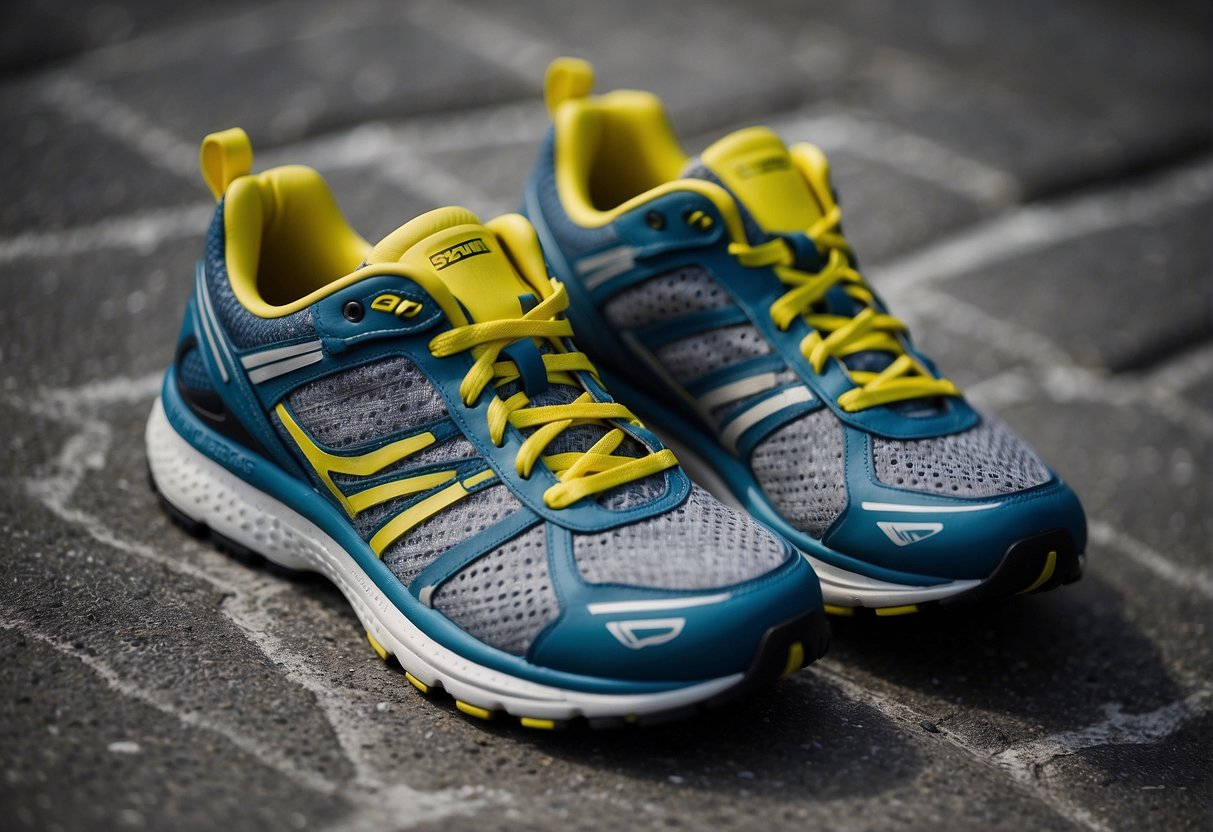
The realm of running shoes has witnessed a remarkable evolution, driven by groundbreaking technology and innovation. This progress is exemplified in models like the Nike Vaporfly and Puma Deviate Nitro, which blend state-of-the-art features to enhance both performance and comfort for runners.
Technology and Innovation
-
Carbon Plates – The Secret to Enhanced Speed:
- Nike Vaporfly’s Breakthrough: The introduction of carbon plates, as seen in the Nike Vaporfly, has revolutionized the running shoe industry. These plates act as a springboard, providing a significant boost in propulsion and energy return, which is crucial for runners aiming to improve their pace and reduce overall fatigue.
- Puma Deviate Nitro’s Innovation: Similarly, the Puma Deviate Nitro incorporates its own version of this technology, offering a unique blend of responsiveness and agility, making it a top choice for athletes seeking to enhance their running efficiency.
-
Advanced Cushioning Systems – The Comfort Revolution:
- Responsive Cushioning: Advanced cushioning systems have transformed the comfort experience in running shoes. These systems, like the Nike ZoomX foam or Asics GEL technology, offer a perfect balance between softness and responsiveness, providing a plush yet energetic ride.
- Impact on Performance: This type of cushioning not only elevates comfort but also aids in better shock absorption, reducing the strain on joints and muscles, which is particularly beneficial for long-distance runners.
Beyond the Basics: Additional High-Performance Features
-
Breathable Mesh Upper – Essential for Foot Health:
- Enhanced Air Flow: A breathable mesh upper is a critical feature for maintaining foot comfort, especially during extended runs. It ensures efficient air circulation, keeping the feet cool and reducing the risk of blisters and overheating.
- Lightweight and Adaptive: Besides offering breathability, these uppers are often lightweight and adapt to the shape of the foot, providing a snug and comfortable fit without adding extra bulk.
-
Excellent Shock Absorption – Protecting Against Impact:
- Reducing Injury Risk: Shock absorption is a key factor in protecting runners from the repetitive impact associated with running. Shoes equipped with superior shock-absorbing materials and designs help to minimize the impact on joints, reducing the risk of injuries.
- Ideal for Hard Surfaces: This feature becomes even more crucial for runners who frequently tackle hard surfaces like concrete, where the impact on the lower body is significantly higher.
-
Maximum Cushioning and Soft Landing – A Boon for Long-Distance Runners:
- Sustained Comfort: For those who engage in long-distance running, shoes that offer maximum cushioning and a soft landing are indispensable. They ensure that each step is comfortably absorbed, reducing fatigue and providing a consistently smooth ride over miles.
- Models to Consider: Shoes like the Brooks Glycerin or the Hoka One One Bondi are renowned for their exceptional cushioning, offering a cloud-like feel that is particularly appreciated during marathon training or ultra-long runs.
Making the Right Choice: Personalizing Your Selection and Knowing When to Upgrade
https://www.youtube.com/watch?v=6CgKzaQqaC4&embed=true
Selecting the right running shoes is a deeply personal and crucial decision for every runner. It’s not just about the brand or the latest model; it’s about what works best for your unique feet and running style. Additionally, understanding when to replace your running shoes is vital for ensuring ongoing foot health and optimal performance.
Personalizing Your Selection
-
Understand Your Running Style and Foot Shape:
- Running Style: Are you a heel striker, midfoot striker, or forefoot striker? Your running mechanics play a significant role in determining the type of shoe that will provide the best support and reduce injury risk.
- Foot Shape: Whether you have high arches, flat feet, or a neutral arch, each foot type requires different levels of support and cushioning. For instance, runners with flat feet might benefit from stability shoes, while those with high arches may need shoes with more cushioning.
-
Consider Specific Needs or Conditions:
- Health Conditions: If you have specific conditions like plantar fasciitis or Achilles tendonitis, look for shoes designed to address these issues.
- Performance Goals: Are you training for a marathon, or do you prefer short, fast runs? Your goals can influence the type of shoe that will best suit your needs.
-
The Importance of Testing and Trying Multiple Pairs:
- Fit and Comfort: Always try on multiple pairs of shoes to find the one that feels most comfortable. Remember, what works for someone else may not work for you.
- Expert Advice: Don’t hesitate to seek advice from a physical therapist or a professional at a specialty running store. They can provide valuable insights based on your biomechanics and running habits.
When to replace Your Running Shoes
-
Recognizing Signs of Wear and Tear:
- Outsole Wear: Check for significant wear in the tread pattern. Uneven wear can also indicate a need for a different type of support.
- Midsole Compression: If the midsole feels too soft or less responsive, it’s a sign that the cushioning is worn out.
-
Being Attuned to How Your Shoes Feel:
- Comfort Level: Pay attention to how your feet feel during and after a run. Discomfort, new aches, or blisters can be signs that your shoes are no longer providing adequate support or cushioning.
- Mileage Tracker: As a general rule, consider replacing your running shoes every 300-500 miles, depending on your running style and the shoe’s durability.
-
Upgrading to New Technology:
- Advancements in Shoe Technology: Running shoe technology is continually advancing. Upgrading to a new pair or a newer version of your favorite shoes can offer improved features, better performance, and enhanced comfort.
- Keeping Up with Innovations: Stay informed about the latest developments in running shoes, such as improved cushioning systems, more sustainable materials, or advancements in shoe ergonomics.
Conclusion
Choosing the right running shoes is a critical decision for any runner. This guide has covered the key factors to consider, from the type of surface and distance you run to specific foot conditions and advanced shoe features. Remember, the best running shoes are the ones that meet your individual needs and preferences, providing the perfect balance of comfort, support, and performance. So, take your time, do your research, and get ready to enjoy every step of your running journey with the perfect pair of shoes.
Whether you’re a seasoned marathoner or a casual jogger, finding the right running shoes is a step towards achieving your personal best. Keep exploring, testing, and enjoying the run – your perfect pair is out there waiting for you.

